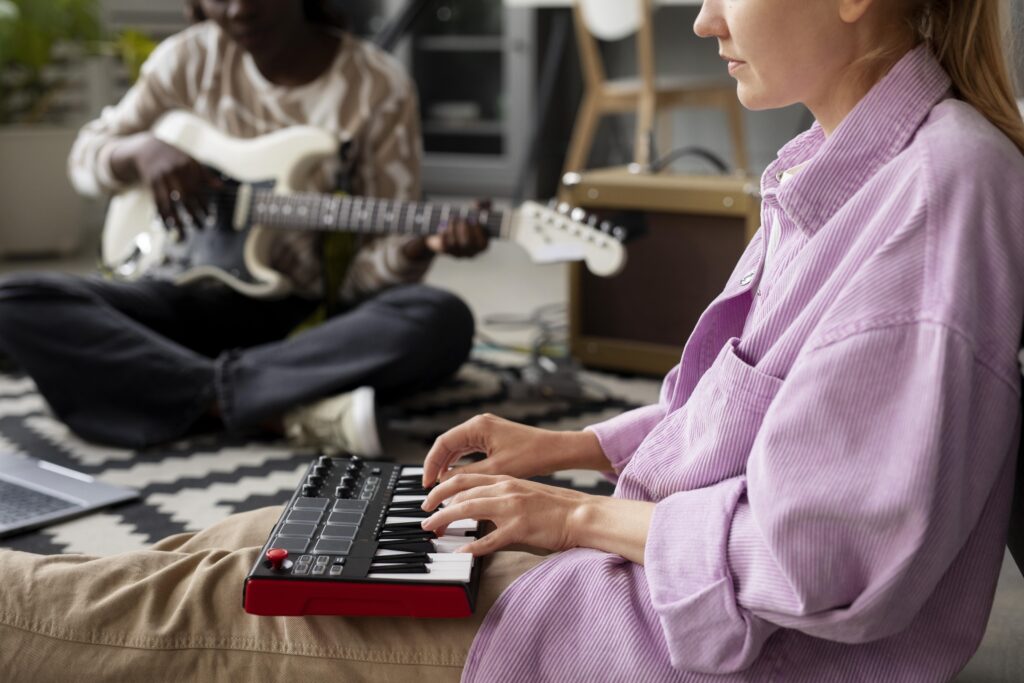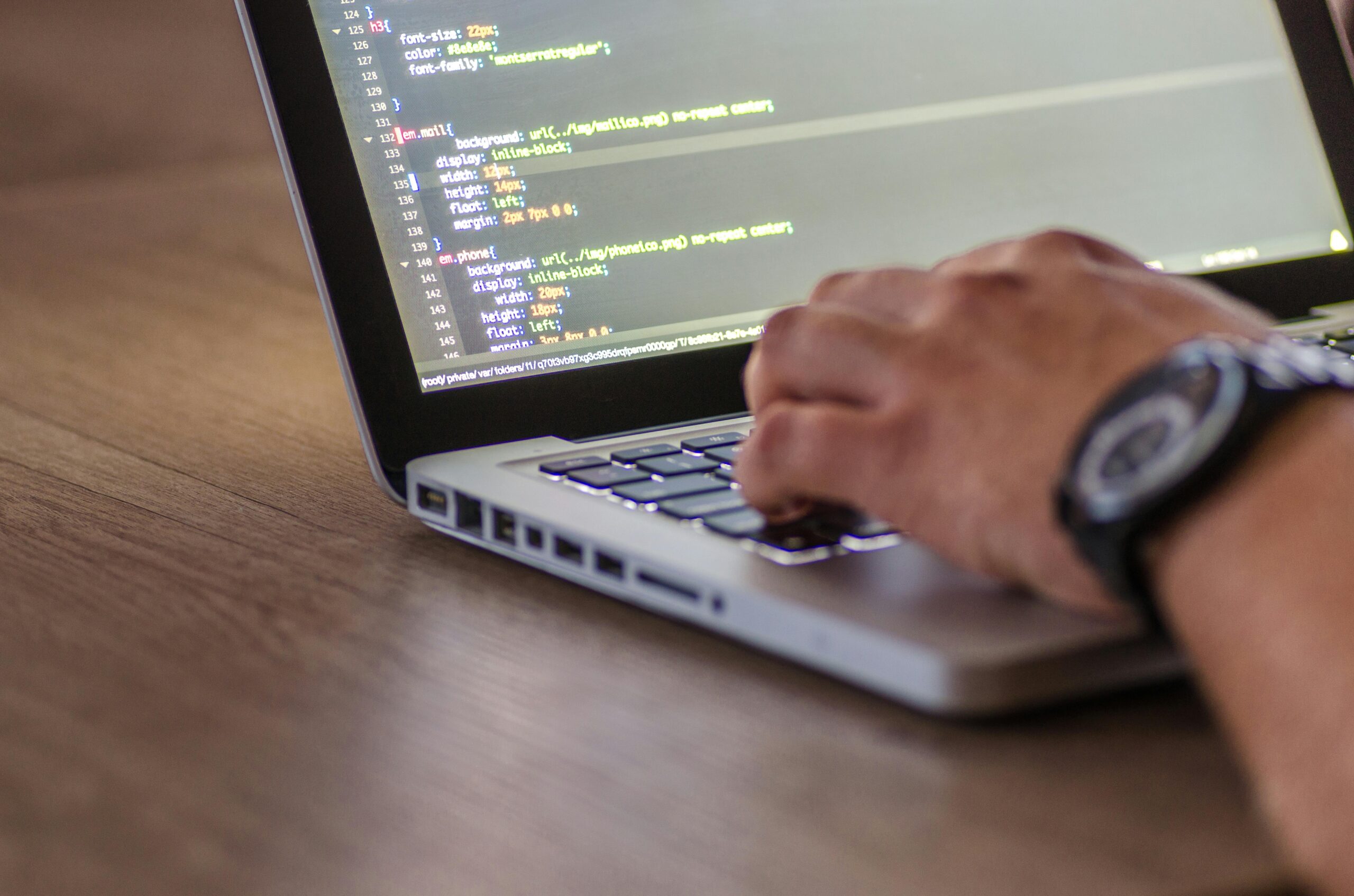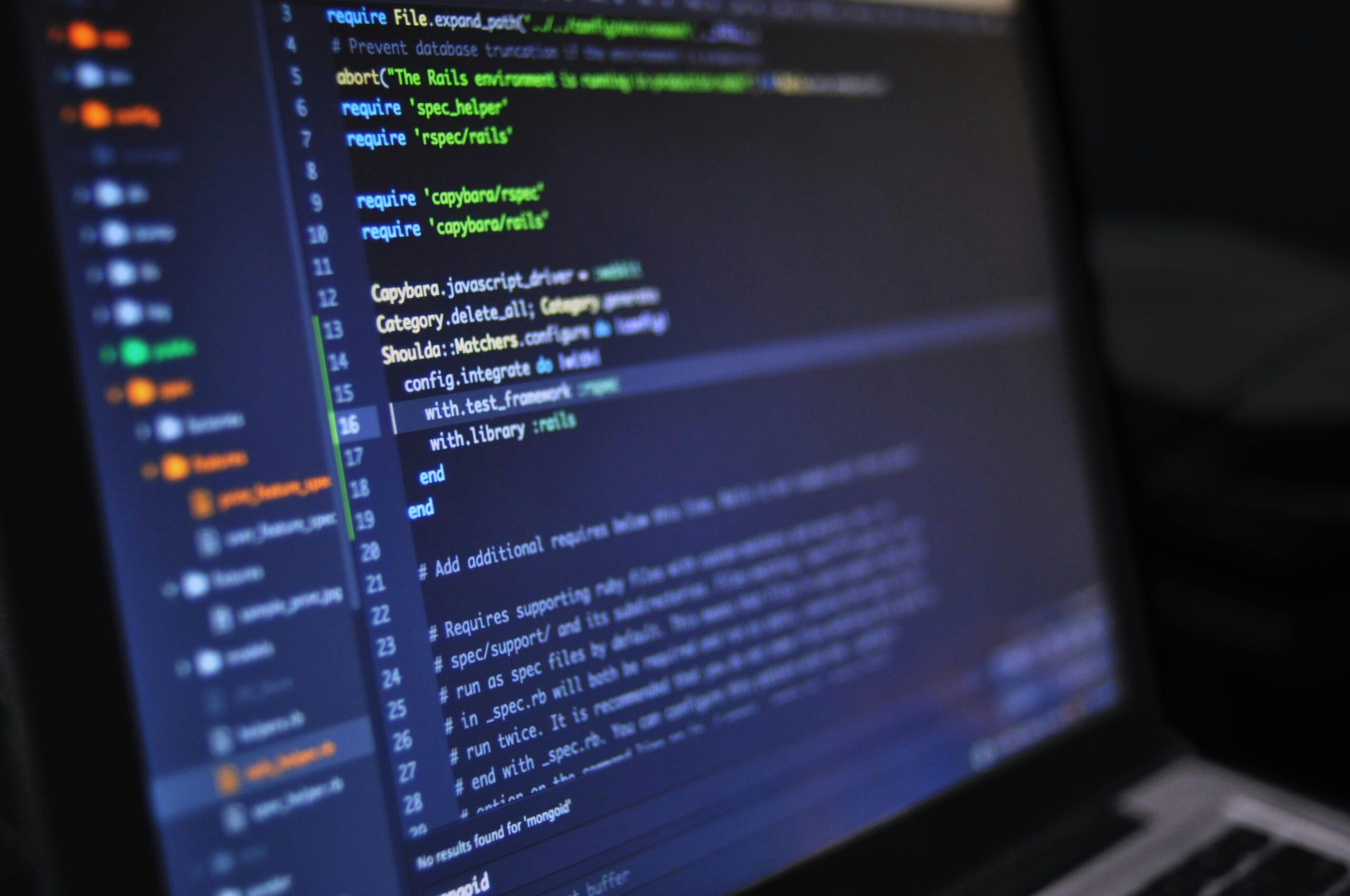Introduction to MIDI Magic — Why Connecting the Instrument Changes Everything
Not only convenient it is — but an entirely new level of communication when a musical instrument suddenly “comes alive” within the app. Not only a MIDI protocol is, but a kind of magic string between you and your music universe. Only half the image you perceive without connecting the instrument, yet by its switch-on — to a whole world of possibilities you are given. In a free music learning app, the Talented app, this first link enables MIDI integration, audio routing, personalized learning, and practice features in one flow of instrument connectivity and workflow integration.
Why It Is Important
- Real-time. Translate immediately into a digital signal every chord and every stroke that you play, that the software can read and understand.
- Accurate feedback. Guessing if the notes fell into place, you don’t need to. Immediately does the program know what and how you play with the instrument.
- Flexible learning. Your abilities you test easily and customized advice you get using the instrument.
It is exactly because of this link that regular lessons take shape, and learning turns into a dynamic and interactive process.
Principal Talented Features with MIDI
Widening possibilities are achievable after the instrument is plugged in. To imagine what can now be done, principal features allow us to imagine. In a free music learning app with strong instrument connectivity and USB MIDI support, these map directly to low-latency audio, signal mapping, and controller setup.
| Function | Description | Advantage |
| Key press tracking | The application logs every note executed in real time | Immediate response, precise analysis |
| Error visualization | Note and rhythm errors are highlighted | Quick correction of errors |
| Individual exercises | Tasks designed based on your actual weak spots | Tailored learning |
| Composition mode | Create melodies from cues by playing the instrument | Creative approach to development |
| Recording and playback | Record your sessions to track improvement | Analysis and motivation |
Making it all interactive, inserting MIDI does: not just listen and repeat you do — but create, test, and hone in a single forum. This is where MIDI integration and practice features converge for advanced practice and sound mapping.
Note it matters: Without being able to play directly with the tool, even the most sophisticated functionality is moot. In the miracle of “live” is the strength here. Have a try — and a great deal will shift from the initial connection.

Step by Step — Connecting Your Hardware to Talented
Pushing open the doors of the program’s limitless possibilities, the first and most obvious step is connecting your MIDI equipment to Talented. The very potential of your software and hardware lie waiting in reserve without configuration. Therefore, a simple but powerful instruction is given. In a free music learning app, this also ensures smoother audio routing and DAW sync later.
- Cable connection
First, ensure that your MIDI interface or instrument and computer USB lead is plugged in correctly. Obvious though this may be, even experienced players forget the simple step sometimes. Prefer USB MIDI or a reliable audio interface for low-latency audio. - Opening Talented and selecting the device
The Talented program needs to be opened. In the settings (usually in “MIDI Settings” or “Devices”), the device to be connected needs to be chosen from the list of available MIDI devices. Device activation is important — it must be marked by a sign or color. - Setting channels and parameters
At 16 channels, MIDI is operational. In order to prevent conflicts (e.g., playing on other instruments), it would be nice to specifically define on which channel Talented will operate. In addition, data transmission rate (MIDI Clock) and message format ought also to be considered. Add MIDI CC signal mapping if needed. - Testing the connection
The simplest way to test proper communication is to play some notes. If this triggers a response in Talented (visual, sound), then everything is set up correctly. - Saving the settings
Upon testing, configuration must be saved so everything will be ready to go right away on the next startup of the program without the need to once again reconfigure.
How MIDI Signals Unlock New Program Functions
Aside from being a note carrier, MIDI is an expressive language that Talented can hear in every detail, allowing for a level of creativity and control heretofore unimaginable. For a free music learning app, this means tighter audio routing, signal mapping, and timed events for personalized learning.
- Real-time parameter control
Volume, panorama, tempo, and effects can be manipulated “live” while playing back with MIDI controllers. Especially convenient this time is for those who enjoy improvising and don’t want to break the flow to perform manual tweaking. Map MIDI CC for controller setup. - Programming and automation
MIDI allows for the production of so-called “automatic clips” — repeated patterns modified by defined algorithms — using it. Automatic reductions are performed, and there is space for experimentation using this. Perfect for timed events and workflow integration. - Synchronization with other devices
Receipt and transmission of MIDI Clock are also available for the software, hence Talented can be synchronized with drum machines, external sequencers, and lighting systems as well — enabling DAW sync with your digital instrument. - Command recognition in depth
Not only basic notes, Talented is able to process advanced MIDI messages — aftertouch, program changes, pitch bend. Other expressive features usually absent in regular environments are therefore made available.
Separately, these gestures through MIDI signals become instruments in the hands of the artist, opening up possibilities of sound and control over the process. In opening this door with nudging, control over what once was static and held is grasped. It is here that magic happens — midi-magic. Here the Talented app shines with practice features and MIDI integration.
Streamlining Work with Talented Using a MIDI Interface
Utilize your MIDI unit and Talented, to be able to perform something other than only plugging in the unit, but streamlining collaboration is significant. Below are suggestions gathered that will aid in stability, precision, and creative independence. In a free music learning app, these optimizations elevate practice customization and session recording.
- Selection of the right MIDI interface
From solid connection, start optimization. Substantial reductions in the incidence of “freezes” and data transmission failure are low-latency, present protocol-supported USB-MIDI interfaces. Latency potential is caused by slow or underpowered interface, which will affect synchronization. - Setting the update rate and buffer
Select ideal buffer size in Talented preferences and MIDI interface drivers. Small buffer value reduces latency, but might form gaps in the audio stream. Large buffer is safe, but with signal delay. Select the lowest compromise option, based on the nature of your hardware. - Proper use of MIDI channels and filters
Incoming message filters, unused by the majority of users, introduce unnecessary load and contention. Skilled needs to be set up to accept only needed MIDI channels and message types (e.g., disable unnecessary controllers). This will decrease the system load and improve program responsiveness. - Driver updates and firmware
To increase compatibility and remove mistakes, software is more suitably updated by producers. Failure to install newer interface drivers and Talented timely — there is ensured safe working. - Feedback and diagnostics
Input MIDI message monitoring in Talented, enable to locate immediately busted commands or “freezes.” Inspection of logs in the proper moment will help set the adjustments and prevent data loss. - Proper power supply for equipment
Inefficient operation can be attributed to inefficient power to the interface or MIDI device. If the device is powered via USB, verify the port is sufficient to power the device or supply the device with an external power supply.
Thus, an inter-industry piece of work in reconciling work with Talented on a MIDI interface. The most significant factor — a natural manner with an involvement of hardware components, professional adjustment of software parameters, and regular diagnostics. Upon the above-provided tips, your artistic collaboration with Talented you will be able to execute smooth, and MIDI sorcery — really efficient. These practice features align with MIDI integration and clean audio routing for advanced practice.
Talented’s Creative MIDI Use Examples
Since the link between your instrument and program is the MIDI signal, in front of you lies a universe of infinite possibility for creativity and experimentation. Not just to play notes does our interface allow — but to develop the most creative music concepts, testing its boundaries to the extreme, all thanks to it. For a free music learning app, this also boosts session recording and workflow integration.
These are some means users are motivated and co-work with MIDI:
- Live Improvisation with Parameter Control
Imagine with the turn of a knob or the press of a pedal, not only volume but effects on the track — arpeggio, reverb, filters — yours. By guiding the instrument with MIDI, so much freedom you gain, turning common playing into an actual performance show. - Sequencer and Drum Machine in One Pulse
With external MIDI controllers, intricate sequences and rhythms can be programmed instantly from the unit — instantly, naturally, without being sidetracked by menus. What previously took minutes to configure now becomes part of your standard workflow. - Sound Parameterization According to Mood
Every piece of music is a universe in its own right. With MIDI, not only notes, but color, dynamics, and the personality of the recording you’re working with. Soft fingered sound or hard synth bass, for example — and turn it on the fly, play and record. Use sound mapping and signal mapping for accuracy. - Interactive Educational Sessions
If the talent is developing, it is extremely handy to give feedback in the form of MIDI: the software listens to the performance and indicates where improvement can be made. This is not a “school,” but an on-going conversation between musician and computer — personalized learning through the Talented app. - Automation of Live Performances
With MIDI, you pre-cue collections of effects and transitions that are triggered at the right time during the concert. This prevents an excessive amount of switching parameters on and off by hand and allows for focus on music — including DAW sync and timed events.
Avoid limiting yourself to the easy “press and play.” The possibility of MIDI — a boon for the creative type — are. When technology is a musician’s extension, not a hindrance, the most imaginative ideas, we find, are born. The next step — pick up your instrument and let your imagination fly, utilizing the very sorcery revealed when connected through MIDI.

Everyday Connection Mistakes and How to Avoid Them
Behind the seemingly simple process of connecting a MIDI device to Talented, there are usually standard mistakes ready to be stumbled upon that will delay your production or give you nothing at all. To avoid these mistakes, listen up to the following items:
- Wrong MIDI port selection. Oftentimes, individuals incorrectly connect to the wrong port — make sure that Talented’s setup selects exactly the interface through which your instrument’s signal is transmitted.
- Outdated or missing drivers. Be sure to ensure your MIDI device drivers are up to date before connecting, especially when connecting through USB interface.
- MIDI channel mismatch. When Talented and the instrument are on different MIDI channels, the signal will never be detected. Make the channels the same before playing to avoid transmission problems.
- Interference with other programs. Drivers or other programs sometimes trap MIDI signals, disabling Talented from functioning. Closing redundant tasks and verifying system priority settings are suggested.
- Hardware and cable connections. Be sure to check cables and connectors for damage — a very common concealed cause of lost signals.
Pre-session checklist
- Update software and drivers.
- Connect your device in advance and confirm the port is reporting as expected in Talented.
- Sync MIDI channels on program and instrument.
- Close competing MIDI programs.
- Test your hardware — one of the easiest yet most important steps.
Virtually doubling your work stability and prioritizing creativity over tech support, this easy set of rules will pay off for you. These safeguards ensure cleaner audio routing and smoother controller setup in the Talented app.
Conclusions — Why MIDI Magic Is the Key to Talented’s Maximum Potential
The full potential of Talented is unleashed by the inspired application of MIDI — that very “MIDI magic.” And not a mere note-transmitting device, but an entire universe of interactive possibility turning your instrument into a full richness of creativity and inspiration.
Disobeying the rules in so many ways, plugging your instrument into MIDI does, and here’s why:
- Extended control. Not only are sounds controlled via MIDI, but effects, synthesis parameters, and mixer as well — in real time.
- Flexibility and interactivity. Brains doesn’t simply take the MIDI instrument’s signal but processes it by own rules to produce an original sound that fits together.
- Hardware-software synergy. The union of body instrument and virtual environment promises uncontrolled creativity and experimentation.
- Sleek acceleration of workflow. No longer tedious typing in of notes or fiddling with settings — all in a snap, speed and effort saved.
From its presence as a static program, taking Talented to a global studio hub where each sound counts and every step can be the potential for new music discovery, MIDI connectivity works its magic. Combine MIDI integration with practice features in the Talented app for stronger personalized learning and streamlined audio routing across your digital instrument setup.
Experiment with this effect yourself: go small: have your instrument plugged in, find the limits of the program, try out different scenarios. The deeper you explore MIDI magic, the more Talented your own personal gateway to a world of limitless musical ideas.
Keep in mind: MIDI is not just a technical necessity. It is the magic key that opens the door to true musical sorcery in Talented — supported by session recording, practice customization, and workflow integration that scales from home study to advanced practice.





Leave a Reply